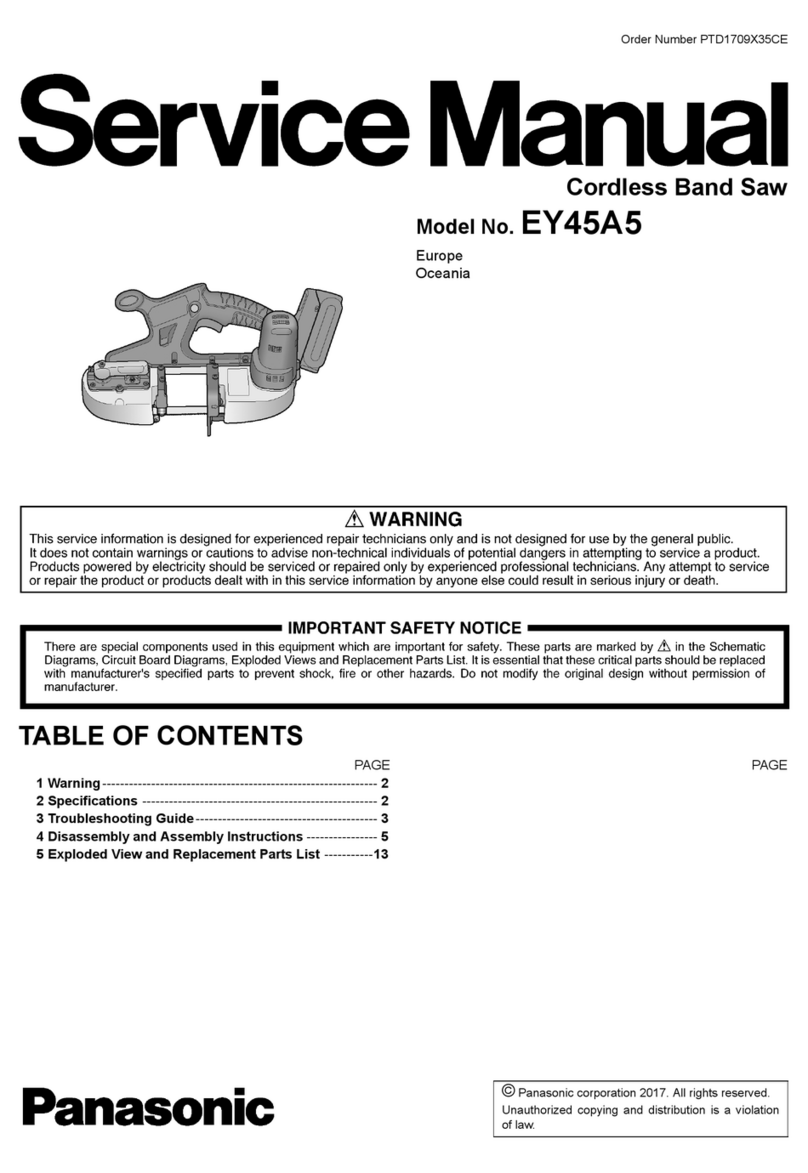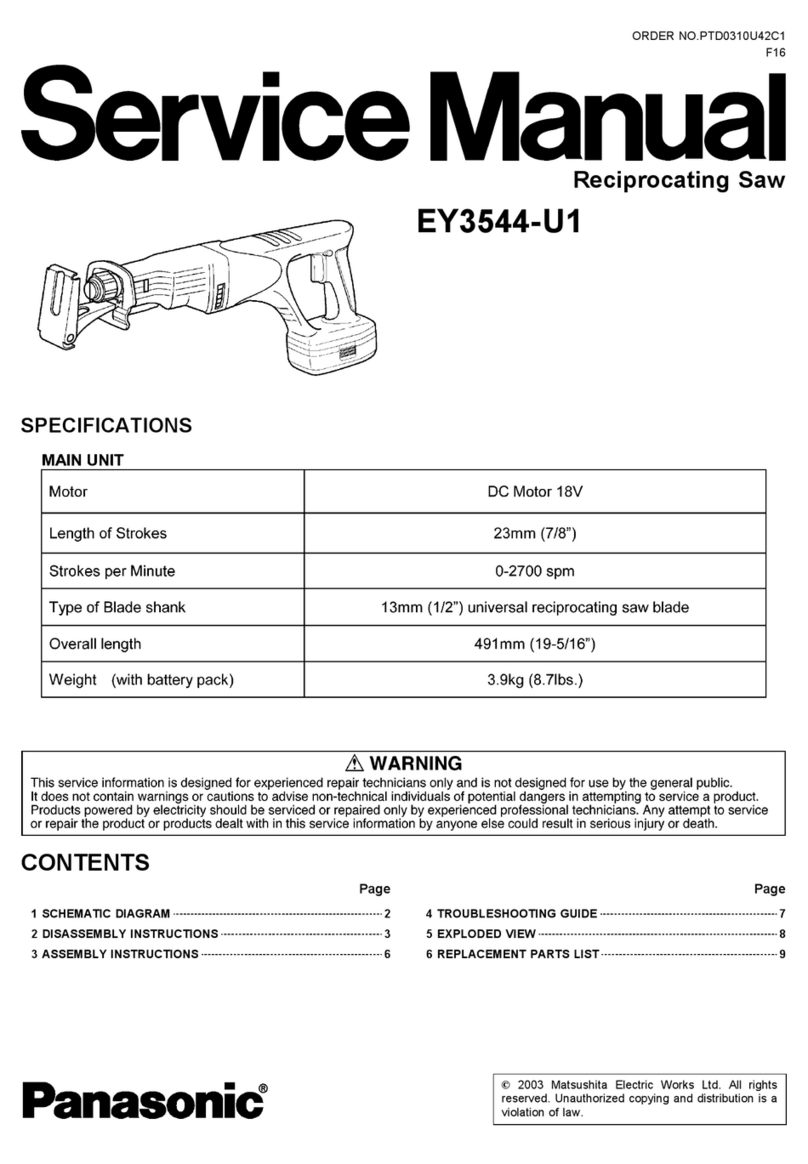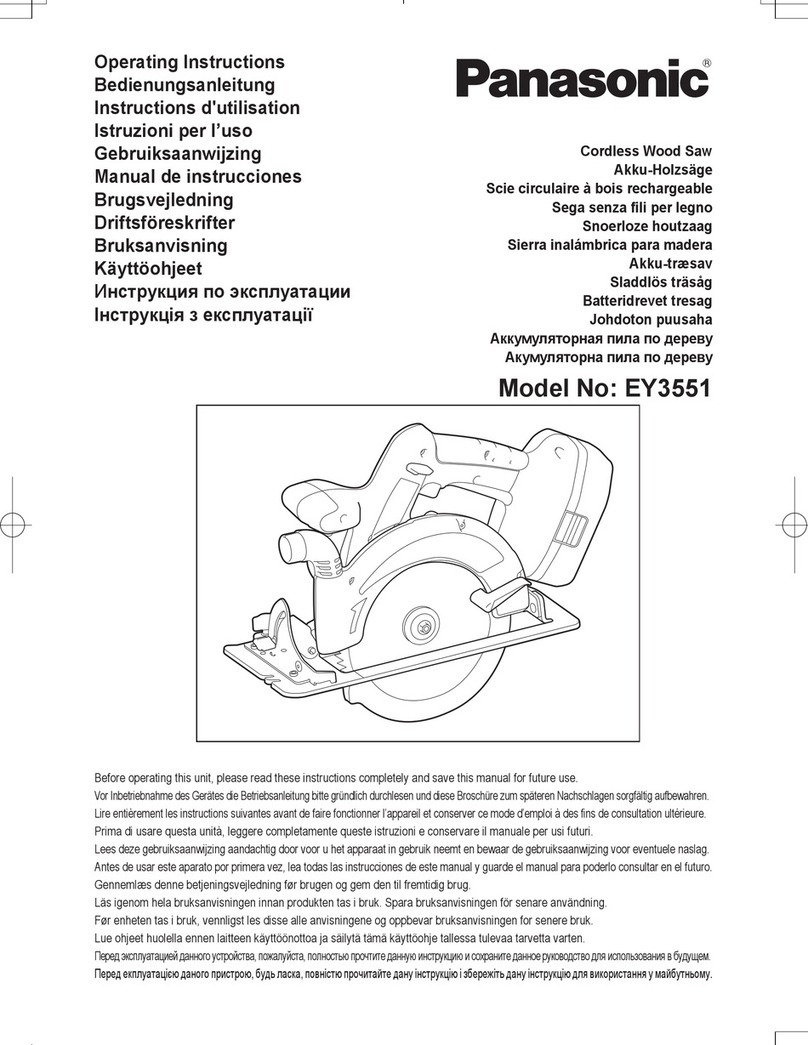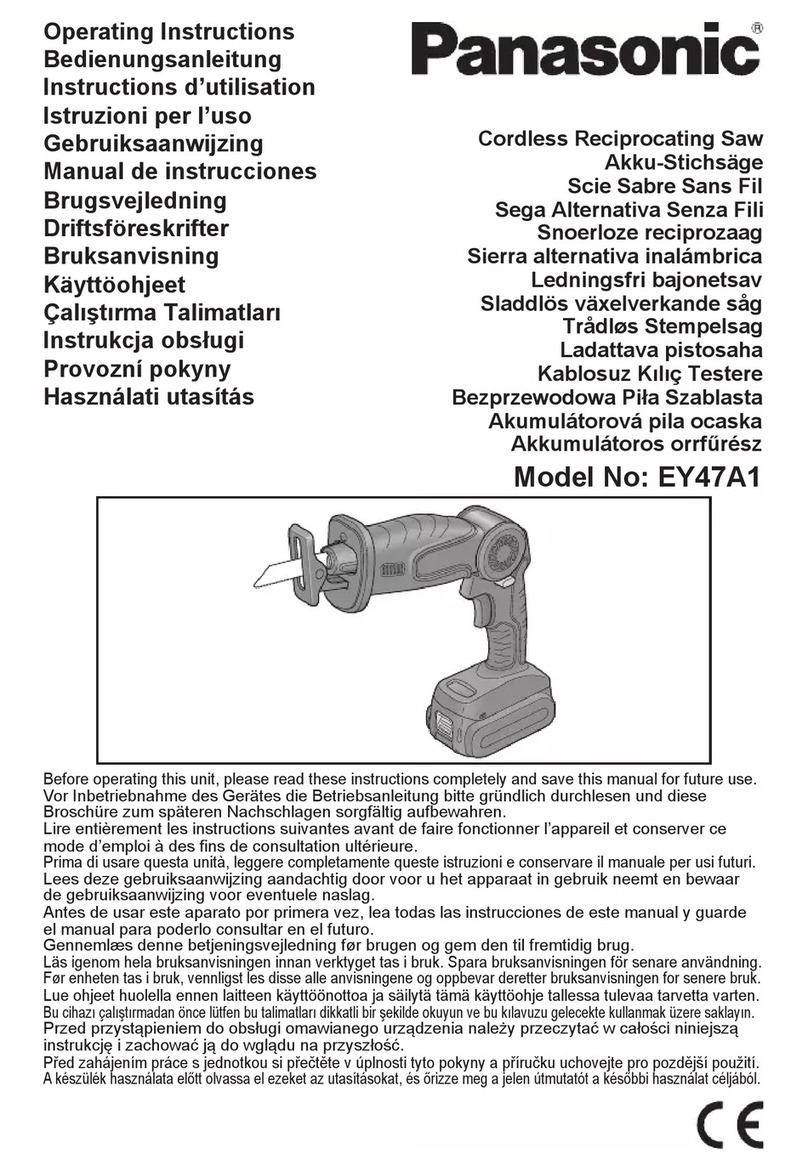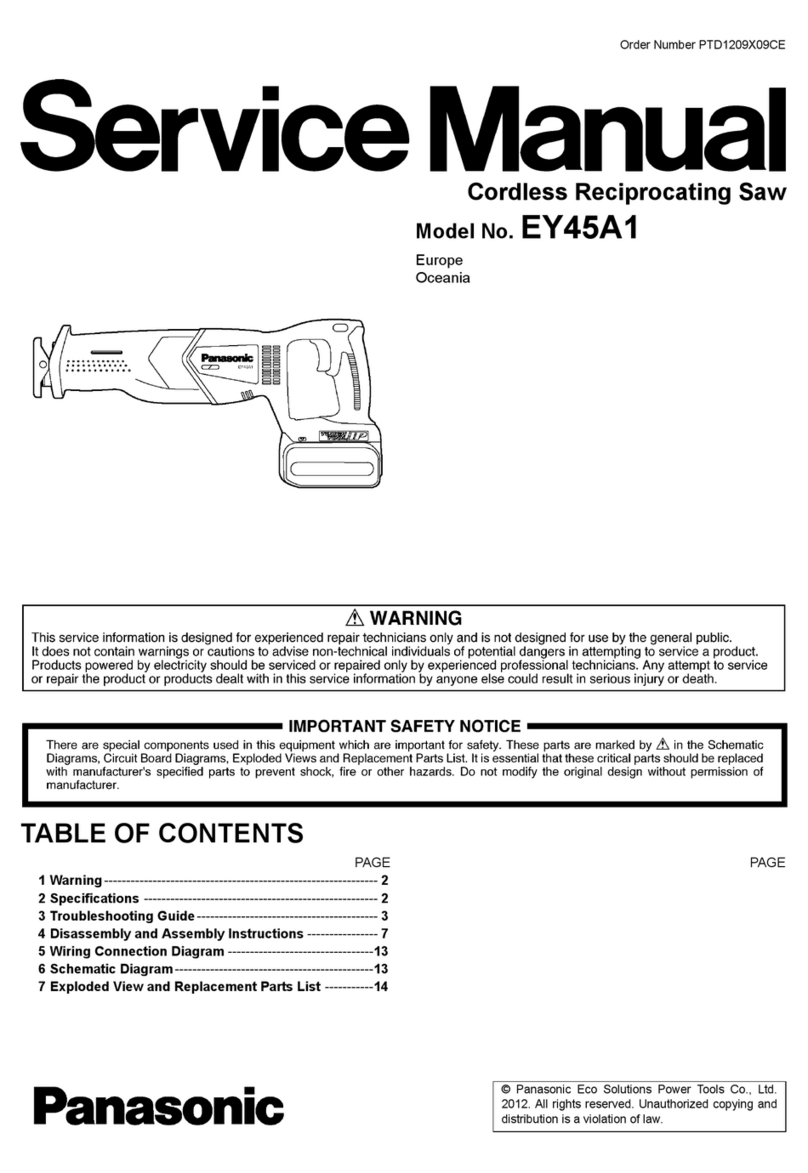- 9 -
Original instructions: English
Translation of the original instructions:
Other languages
I. INTENDED USE
Thank you for purchasing the Pana-
sonic Jigsaw. This jigsaw can be used
with Panasonic rechargeable batteries
to provide excellent cutting perfor-
mance. The jigsaw is for cutting metal,
wood, and drywall only.
Read the “Safety Instructions” booklet
and the following before using.
II. ADDITIONAL
SAFETY RULES
1) Hold tool by insulated gripping
surfaces when performing an op-
eration where the cutting tool may
contact hidden wiring. Contact with
a “live” wire will also make exposed
metal parts of the tool “live” and
shock the operator.
2) Use clamps or another practical
way to secure and support the
workpiece to a stable platform.
Holding the work by hand or against
your body leaves it unstable and
may lead to loss of control.
3) Keep hands away from cutting
area and blade. Keep your insu-
lated gripping surfaces. If both
hands are holding the tool, they
cannot be cut by the blade.
4) Never hold piece being cut in
your hands or across your leg. It
is important to support the work
properly to minimize body exposure
or loss of control.
5) Be aware that this tool is always
in an operating condition, since it
does not have to be plugged into
an electrical outlet.
6) Always use safety goggles or
glasses with side shields. Ordi-
nary eye or sun glasses are NOT
safety glasses.
7) When this tool is used for
woodworking in confined areas
(e.g. indoors), wear dust mask.
8) Avoid cutting nails. Inspect work-
piece for any nails and remove
them before operation.
9) Do not cut oversized workpiece.
10) Check for the proper clearance
beyond the workpiece before cut-
ting so that the blade will not
strike the floor, workbench, etc.
11) Hold the tool firmly.
12) Make sure the blade is not con-
tacting the workpiece before the
switch is turned on.
13) Keep hands away from moving
parts.
14) Do not touch the blade or work-
piece immediately after opera-
tion; they may be extremely hot
and could burn your skin.
15) Never swing tool.
16) Do not use blades which are de-
formed or cracked.
17) Do not use blades which do not
comply with the characteristics
specified in these instructions.
18) Remove the battery pack from the
tool body before replacement of
the blade, making adjustments,
or other maintenance work.
19) Wear ear protectors when using
the tool for extended periods.
